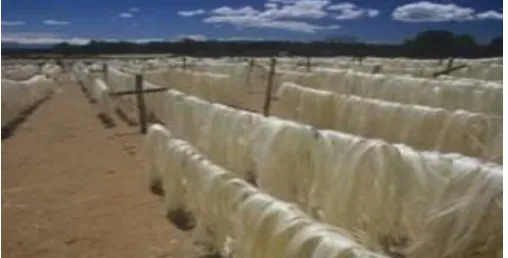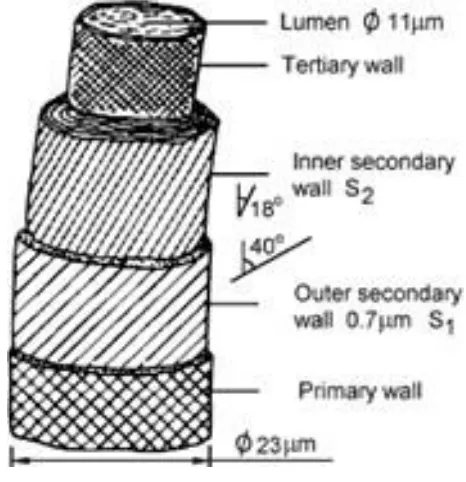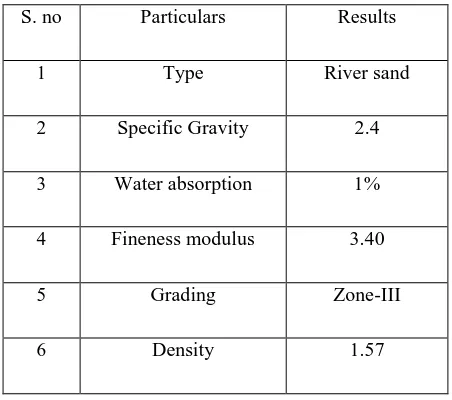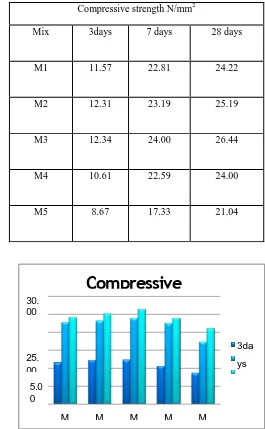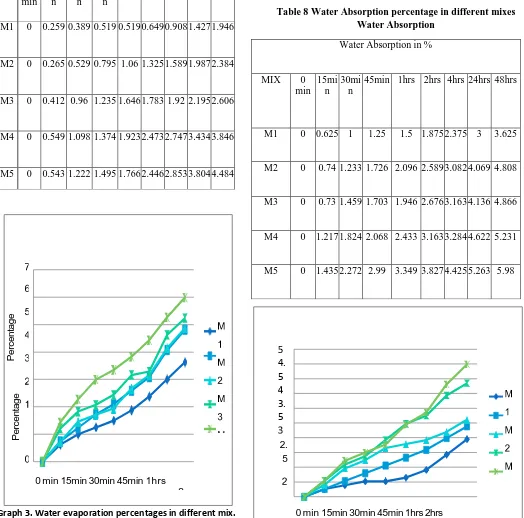Natural Sisal Fibre Reinforced Concrete with Experimental Studies
V. Karunya Latha
1, B. Beeraiah
22
Asst Professor, Department of Civil Engineering, Velaga Nageswara Rao College of engineering, Ponnur, Andhra
Pradesh (India)
---***---
ABSTRACT:
Concrete is strong in compression and weak in tension. So we will provide the reinforcement to the concrete. Majorly steel is used as the reinforcement. Many of the researches are in progress to find a substitute to this material. Many investigations proposed artificial fibres. In this project we would like to take the naturally available fibre named sisal fibre is taken as a substitute material to the reinforcement and studied the propertie.The results show that the composites reinforced with sisal fibres are reliable materials to be used in practice for the production of structural elements to be used in rural and civil construction. This material could be a substitute to the steel reinforcement which production is a serious hazard to human and animal health and is prohibited in industrialized countries. The production of sisal fibres as compared with synthetic fibres or even with mineral asbestos fibres needs much less energy in addition to the ecological, social and economical benefits.Keywords: sisal fibre, asbestos fibres, compression & tensile strength.
1. Introduction
[image:1.595.30.284.620.749.2]Natural fibres are prospective reinforcing materials and their use until now has been more traditional than technical. They have long served many useful purposes but the application of materials technology for the utilization of natural fibres as the reinforcement in concrete has only taken place in comparatively recent years. The distinctive properties of natural fibre reinforced concretes are improved tensile and bending strength, greater ductility, and greater resistance to cracking and hence improved impact strength and toughness. Besides its ability to sustain loads, natural fibre reinforced concrete is also required to be durable. Durability relates to its resistance to deterioration resulting from external causes as well as internal causes.
Fig 1 Sisal Fibre extraction
1.2 Generally the fibers are classified in to two types
They are artificial fibers and natural fibers. In the artificial fibers steel, asbestos, glass, carbon, synthetics etc are used and in the natural fibers horse hair, sisal, coir, bamboo, jute, aware, elephant grass, coconut fibers etc are used and in this human hair was used as a fiber. Human hair is natural fiber and it is strong intension.
Fiber reinforced concrete has so far been successfully used in slabs on grade, architectural panels, precast products, offshore structures, structures in seismic regions, thin and thick repairs, crash barriers, foot0ings, hydraulic structures and many other applications. Fiber Reinforced Concrete (FRC) is gaining attention as an effective way to improve the performance of concrete. Fibers are currently being specified in tunneling, bridge decks, pavements, loading docks, thin unbounded overlays, concrete pads, and concretes slabs. These applications of fiber reinforced concrete are becoming increasingly popular and are exhibiting excellent performance. Fiber-reinforced concrete (FRC) is concrete containing fibrous material which increases its structural integrity. It contains short discrete fibers that are uniformly distributed and randomly oriented. Fibers include steel fibers, glass fibers, synthetic fibers and natural fibers this study presents understanding strength of
© 2019, IRJET | Impact Factor value: 7.34 | ISO 9001:2008 Certified Journal
| Page 141
9
1fibre reinforced concrete. Mechanical properties and durability of fiber reinforced concrete.
1.3Scope
Concrete is strong in compression and week in tension. To increase the tensile strength of concrete we are adding sisal fibre. Also it resists the plastic shrinkage cracks. This sisal fibre is a natural product that is available in the fields and if this could replace the reinforcement in the concrete it would be a gigantic change in the construction industry.
1.4 Objective
To study the mechanical and transport properties of concrete
1. Compressive test on concrete cubes (150 × 150 × 150 mm)
2. Split tensile strength on cylinders (Ø 100 mm & 200 mm long)
3. Evaporation test on cubes (150 × 150 × 150 mm) 4. Water absorption test on cubes (150 × 150 × 150
mm)
5. Moisture migration test on cubes (150 × 150 × 150 mm)
2. Literature Review
M. A. Aziz, P. Paramasivam and S. L. Lee 1984: Natural fibres are prospective reinforcing materials and their use until now has been more traditional than technical. They have long served many useful purposes but the application of materials technology for the utilization of natural fibres as the reinforcement in concrete has only taken place in comparatively in recent years. The distinctive properties of natural fibre reinforced concretes are improved tensile and bending strength, greater ductility and greater resistance to cracking and hence improved impact strength and toughness. Besides its ability to sustain loads, natural fibre reinforced concrete is also required to be durable. Durability
relates to its resistance to deterioration resulting from external causes as well as internal causes.
Mechanical characterization and impact behaviour of concrete reinforced with natural fibres were studied by S.K. Al-Oraimi and A. C. Seibi (1995). Here an experimental study was conducted using glass and palm tree fibres on high strength concrete. Mechanical strength properties such as compressive, split tensile, flexural strengths and post cracking toughness were studied. It was concluded that natural fibres are comparable with glass fibres. A finite element analysis was also done using ANSYS software. Both analytical and experimental results were compared an acceptable.
[image:2.595.320.553.427.668.2]G.Ramakrishna and T. Sundararajan (2002). Flow value, cohesion and angle of internal friction were determined for three different mix ratios and four different aspect ratios and fibre contents. Based on the rheological properties of fresh mortar, it was recommended to use shorter fibres with low fibre- content for achieving workability and higher fibre content for better cohesiveness in wet state.
Fig 2. Schematic sketch of a sisal fibre
3. MATERIALS AND PROPERETIES
Cement: OPC 53 grade cement from a single batch will be used throughout the course of the project work. The properties of cement used are shown in table below.
Table 1: Physical properties of Cement
S.no
Particulars Results
1 Specific gravity 3.05
2 Initial setting time 170 min
3 Final setting time 230 min
4 Consistency 25%
5 Fineness 298 m2/kg
6 Compressive Strength of cement@ 3, 7, 28
days
35, 46, 58 N/mm2
[image:3.595.327.537.84.244.2]Fine aggregate: Fine aggregate used in the experiments was locally available river sand conforming to IS 383- 1970(6). The physical properties of the fine aggregates were tested in accordance with IS 2386(10).
Table 2: Properties of fine aggregates
S. no Particulars Results
1 Type River sand
2 Specific Gravity 2.4
3 Water absorption 1%
4 Fineness modulus 3.40
5 Grading Zone-III
6 Density 1.57
[image:3.595.45.271.489.689.2]Coarse Aggregate: The coarse aggregate used in this study was crushed granite of maximum size 20 mm obtained from the local crushing plant. The physical properties of the coarse aggregate were tested in accordance with IS 2386(10).
Table 3: Properties of coarse aggregates
Sisal Fibre: Sisal fibre (Agave sisalena) is an agave that yields a stiff fibre traditionally used in making twine rope and also dartboards. The term may refer either to the plant or the fibre, depending on context. It is sometimes incorrectly referred to as sisal fibre hemp because hemp was for centuries a major source for fibre, so other fibres were sometimes named after it.
The Sisal fibre plants consist of a rosette of sword-shaped leaves about 1.5 to 2 meters tall. Young leaves may have a few minute teeth along their margins, but lose them as they mature. The sisal fibre plant has a 7–10 year life-span and typically produces 200–250 commercially usable leaves. Each leaf contains an average of around 1000 fibres. The fibres account for only about 4% of the plant by weight. Sisal fibre is considered a plant of the tropics and subtropics, since production benefits from temperatures above 25 degrees Celsius and sunshine.
Fig 3. Raw Sisal Fibre S. no Particulars Results
1 Type Crushed stone
2 Specific Gravity
2.6
3 Water
absorption
0.8% 4 Fineness
modulus
7.98
5 Size 20 mm (max)
6 Density 1.48
[image:3.595.313.566.574.724.2]M 5 M 4 M 3 M 2 M 1 0. 50
3da
ys
7da 3.
0 0
2. 5
Split
ttttTreTensil
M M
M M
M 5.0 0
3da
ys
7da 30.
00
25. 00
[image:4.595.320.551.53.231.2]Compressive
Table 4: Physical Properties of Sisal Fibre
S. no Particulars
Results
1 Diameter 0.2mm
2 Elongation 4.3%
3 Water absorption 3%
4 Cellulose 70%
5 Tensile Strength 300 Mpa
6 Density 1.450gm/cm3
4. EXPERIMENTAL INVESTIGATION
4.1 SPLIT TENSILE STRENGTH
[image:4.595.296.561.321.750.2]Split Tensile test is conducted on the cylinders of the sizes in ratio 1:2 to the diameter and length of the specimen. In this investigation totally 45 cylindrical moulds of size 100mm*200 mm were tested for knowing Split tensile strength of different mixes at 3 days , 7days, and 28 days.
Table 5 Split Tensile Strength for different mixes
Graph 1. Shows the split tensile strength of concrete
4.2 COMPRESSIVE STRENGTH
Table 6 Compressive Strength of different mixes
Split Tensile Strength N/mm2
Mix 3 days 7 days 28 days
M1 0.96 1.77 2.36
M2 1.07 1.96 2.62
M3 1.15 2.11 2.81
M4 0.95 1.75 2.33
M5 0.79 1.46 1.95
Compressive strength N/mm2
Mix 3days 7 days 28 days
M1 11.57 22.81 24.22
M2 12.31 23.19 25.19
M3 12.34 24.00 26.44
M4 10.61 22.59 24.00
M5 8.67 17.33 21.04
[image:4.595.36.284.518.759.2]0 min 15min 30min 45min 1hrs 2 4.3 EVAPORATION TEST
Evaporation is the basic property to know about the transport property of the concrete and that may affect the concrete if the concrete is having the large amounts of the water evaporation as the durability of the concrete may be affected.
Graph 3. Water evaporation percentages in different mix.
4.4 WATER ABSORPTION TEST
Graph 4 Water Absorption percentages in different mix. Evaporation in %
MIX 0 min
15mi n
30mi n
45mi n
1hrs 2hrs 4hrs 24hrs 48hrs
M1 0 0.259 0.389 0.519 0.519 0.649 0.908 1.427 1.946
M2 0 0.265 0.529 0.795 1.06 1.325 1.589 1.987 2.384
M3 0 0.412 0.96 1.235 1.646 1.783 1.92 2.195 2.606
M4 0 0.549 1.098 1.374 1.923 2.473 2.747 3.434 3.846
M5 0 0.543 1.222 1.495 1.766 2.446 2.853 3.804 4.484
Water Absorption in %
MIX 0
min 15mi
n 30mi
n
45min 1hrs 2hrs 4hrs 24hrs 48hrs
M1 0 0.625 1 1.25 1.5 1.875 2.375 3 3.625
M2 0 0.74 1.233 1.726 2.096 2.589 3.082 4.069 4.808
M3 0 0.73 1.459 1.703 1.946 2.676 3.163 4.136 4.866
M4 0 1.217 1.824 2.068 2.433 3.163 3.284 4.622 5.231
M5 0 1.435 2.272 2.99 3.349 3.827 4.425 5.263 5.98
0 min 15min 30min 45min 1hrs 2hrs 4hrs 24hrs 48hrs
4.
5
3.
5
2. 5
1.
P
e
rc
e
n
ta
g
e
P
e
rc
e
n
ta
g
e
[image:5.595.39.563.226.744.2]© 2019, IRJET | Impact Factor value: 7.34 | ISO 9001:2008 Certified Journal
| Page 14
22
Table 8 Water Absorption percentage in different mixesWater Absorption Table 7 Evaporation percentage in different
mixes
Conclusions
All the material tests, strength test such as compression, split tensile and the transport properties like evaporation, water absorption and moisture migration had been carried out in the laboratory and as per code provision only. Results of experiments on different properties of different mixes in which fibre is added with different percentages
The following conclusions are drawn from the investigation
One day strength results are not to be estimate for the fibre content as the increase in the fibre percentage the setting time of the concrete is delayed.
Freshly prepared Sisal fibre contain some gelatinous chemical reagents which may affect the chemical properties of cement in concrete
When the percentage of fibre is increased by more than 1% reduction in mechanical properties is observed.
Reduction in strength is due the increase in the fibre percentage and that may leads to porous structure by the agglomeration.
Increase in strength up to 1% is due to utilization of water present in fibre for chemical reaction at time of curing and less concentration of fibre created density compacted medium in cement concrete
The addition of the fibre in small amounts will increase the tensile strength.
Addition of fibers not only increases tensile strength but also increases bond strength, decreases permeability.
Toughness of concrete also increases by the addition of the fibre.
R
eferences
M. A. Aziz, P. Paramasivam and S. L. Lee 1984- Natural fibers are prospective reinforcing materials and their use
S.K. Al-Oraimi and A.C.Seibi (1995)-Mechanical characterization and impact behavior of concrete reinforced with natural fibers’
G.Ramakrishna and T.Sundararajan (2002)-Rheological properties of coir fibre reinforced cement mortar
K. Bilba, M. A. Arsene and A.Ouensanga (2003) - Sisal fibre reinforced cement composites
Text book on properties of concrete by Neville
Text book on concrete technology by M.S Shetty
Text book on concrete technology by Ghambhir.
